Standing seam metal roofing (SSMR) is the most convenient of any roof type for mounting PV modules, either crystalline or thin-film. The seams of SSMR are beam-like elements that not only add stiffness and flexural strength to the roof panels, but also provide expedient attachment points for a PV system. Joining PV modules to this roof type can be done with or without continuous mounting rails using aluminum seam clamps.
Best design and installation practices when using seam clamps to structurally attach PV systems to standing seam metal roofs
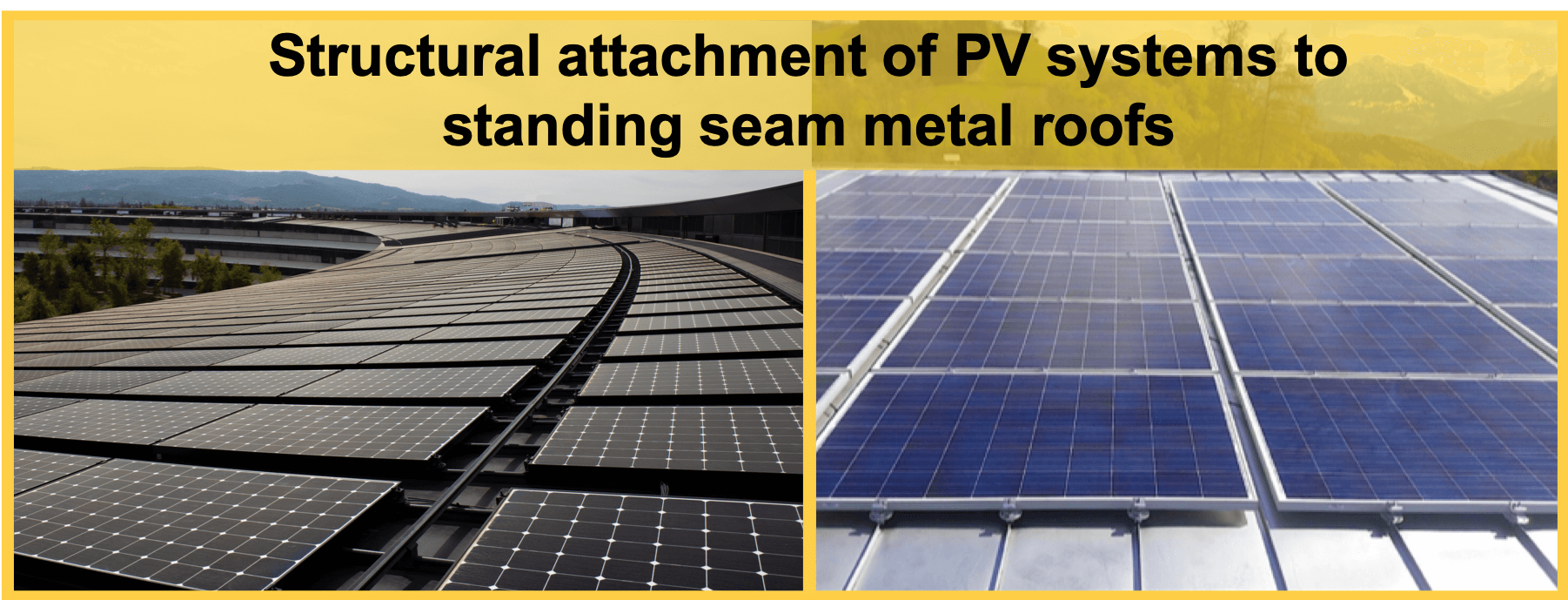
Seam Clamps and Mechanical Compression
These clamps anchor to the roof seam by pinching it within the clamp body with round point set-screws that are in no way invasive to the roof. The setscrew forces the metal of the standing seam into a recess in the opposing clamp wall, permanently deforming it in order to establish a mechanical interlock. The clamp body is machined with threaded holes to facilitate anchorage of PV modules or racking components to the clamp.
The SSMR industry has used this attachment technology for many years, and most SSMR manufacturers endorse and recommend this method when making attachments of various ancillaries to their roof systems. And it is a prime concern to all parties involved—building owner, roof manufacturer, PV integrator and code authority — that the integrity of the roof system is maintained and attendant warranties, if any are in place, are not jeopardized.
The result is a PV-to-SSMR marriage that provides maintenance freedom for the expected service lives of both the PV system and the roof. When properly executed, these methods are not only dependable and expedient, but also cost-effective.

12%-18% Savings Cost Using PV and Standing Seam Metal Roof
Want to achieve the perfect marriage between a PV system and the SSMR using seam clamps? Follow our suggested best practices:
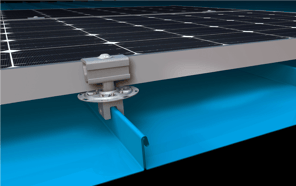
Compatibility
Metallurgical compatibility is always important on a rooftop where materials will be in electrolytic contact. SSMR is most often steel, occasionally aluminum and very rarely copper, stainless or some other metal. Steel and aluminum may be pre-painted (coil coated) or bare (unpainted). The latter is something of a misnomer. This is becasue steel will always have a protective coating of pure zinc (galvanized) or an aluminum/ zinc alloy (Galvalume® or Zincalume®) for corrosion protection.
Aluminum seam clamps are compatible with all these metals except copper. When roofing is copper, brass seam clamps should be used. Somewhere between the brass clamp and the aluminum PV frame an electrolytic switch must be made. This can be done with a passive metal like stainless steel or with rubber isolators or both.
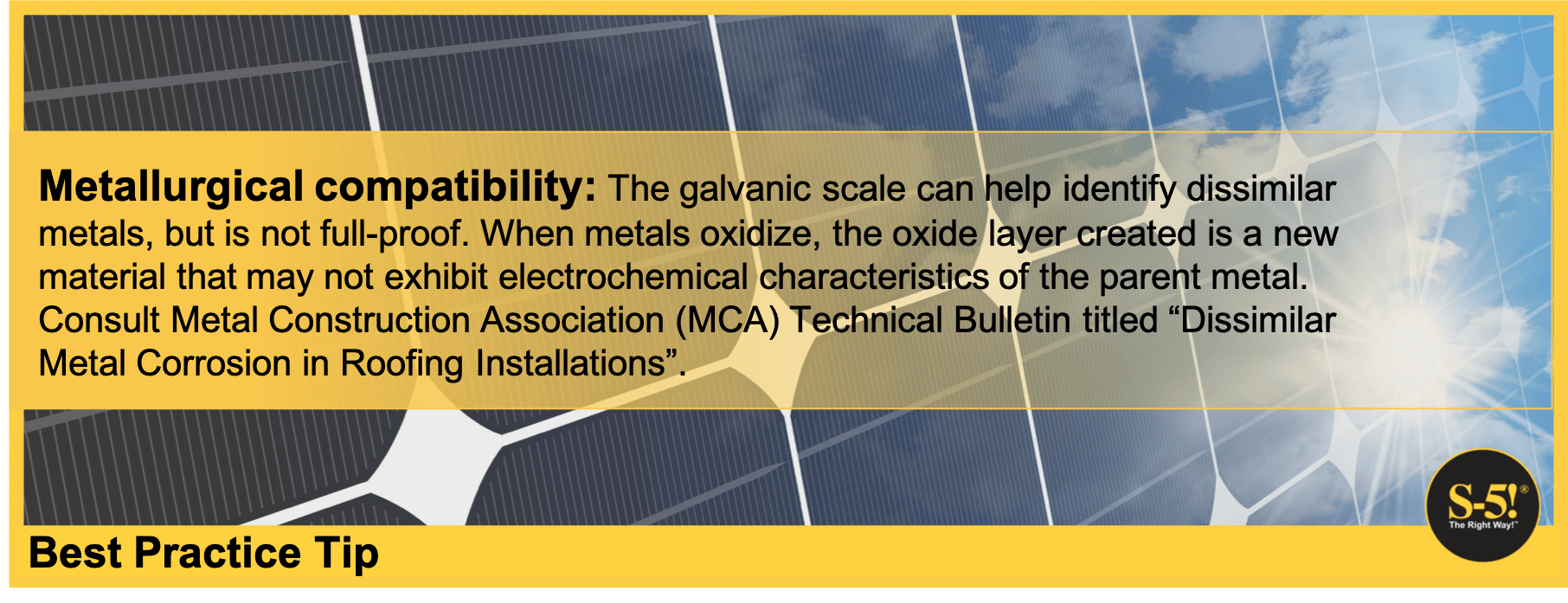
Using the galvanic scale: Some installers might want to use the galvanic scale to identify dissimilar metals, but the graphical galvanic scale is not always a good way to determine whether one metal is compatible with another. The reason is that when metals oxidize, the oxide layer created is a new material that may or may not exhibit the electrochemical characteristics of the parent metal. Therefore, the scale does not always tell the whole truth. Further information can be found via the Metal Construction Association (MCA) Technical Bulletin titled “Dissimilar Metal Corrosion in Roofing Installations."
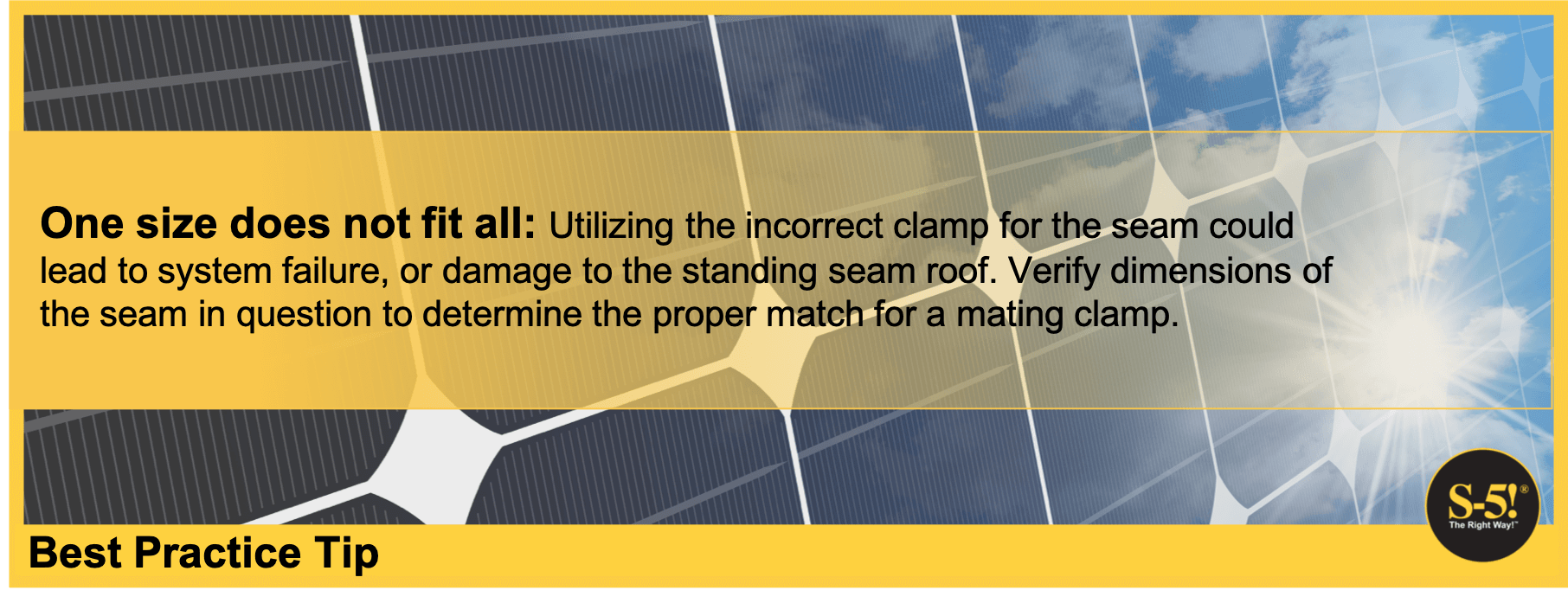
One Size Does Not Fit All
Another compatibility issue has to do with the shape or profile of the SSMR seam itself and the seam clamp selected. Many different seam geometries exist, along with a number of corresponding seam clamp profiles. One size seam clamp does not fit all, and utilizing the incorrect clamp for the specific standing seam could lead to system failure, or damage to the standing seam roof. Examine and verify the dimensions of the seam in question and consult with the seam clamp manufacturer to determine the proper match for a mating clamp.
How Much Will That Clamp Hold?
The holding strength of the seam clamp is typically tested in two different load directions: parallel to the seam direction and perpendicular (negative load normal to roof). These tests replicate drag loads such as sliding snow and uplift loads induced by wind effects. Ultimate and allowable loads should be published on the seam clamp manufacturer's website, and lab test reports should be made available upon request.
Commercially available products that are not adequately tested should not be used. It is also important to look at the nature of the testing done, the reporting, and determine whether or not it is appropriate for the application. Scrutinize the laboratory that conducted the tests too. Tests should be conducted in an A2-LA accredited or an ISO/IEC 17025, third-party laboratory.
Holding strengths vary widely and are panel specific, varying with the seam material, gauge and profile of the SSMR. In order to determine the appropriate clamp and allowable load, these variables of the roof panel system must be identified. This is most easily done by matching the manufacturer name and the panel profile name to the listings on the clamp provider’s website. When reviewing this data, keep in mind that most roof manufacturers make more than one profile.
Tested Holding Strengths
It is also important to recognize, when relying upon these tested holding strengths, that seam clamp manufacturers can test the strength of the clamp-to-seam ONLY - and not other elements of the roof assembly, because these vary with every job. The seam clamp connection in most instances exceeds the strength of other elements in a completed PV-to-SSMR assembly.
Think of a PV system mounted on a rooftop as a chain of components.
- The seam clamp’s attachment to the seam may be the strongest link.
- The weaker links in the chain may include the SSMR attachment to the structure, the flexural strength of the SSMR seam or even the buckling strength of the structure.
- This is why it is important NOT to rely solely on the strength of the clamp as the determining factor when determining attachment frequency.
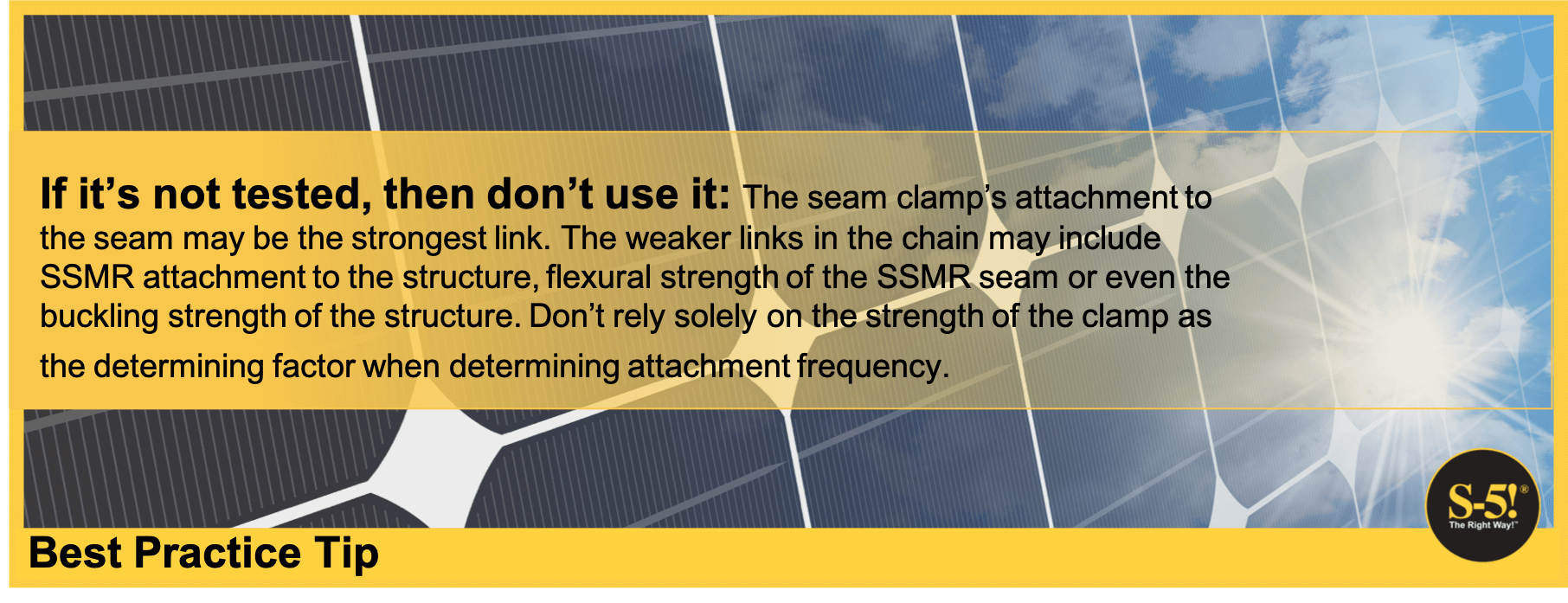
Clamp Placement and Population
The frequency of attachment of the PV system to the roof is critical but oftentimes misunderstood. There are no standards that spell out these requirements. A competent professional should design and specify the clamp population. PV modules, for example, are subject to UL 1703, which states that they should resist 30 pounds per square foot plus a 50% factor of safety. Racking components are subject to UL 2703 which requires assembly testing of PV modules and attachment hardware in three different load orientations. SSMR in general is subjected to some of the most exacting wind tests in the construction industry, including ASTM E1592, UL 580 and FM4471. SSMR is a structural element and is engineered to meet design wind speeds and resultant negative pressures on its surface.
The pre-engineered metal building industry has standardized roof attachment around a 5-foot structural spacing and 2-foot roof panel width, resulting with clips anchoring roof panels to structure every 10 square feet, on a 2 x 5-foot grid. Other roof panels used may be 16-inch, 18-inch and in rare cases 30-inch widths. Occasionally, structural purlin spacing will also vary from the 5-foot standard. The objective when attaching a PV array to the SSMR is to distribute the loads from the PV array—primarily uplift—evenly into and through the SSMR to the building structure. Attachment of roof to building structure is accomplished with clips hidden within the seams.
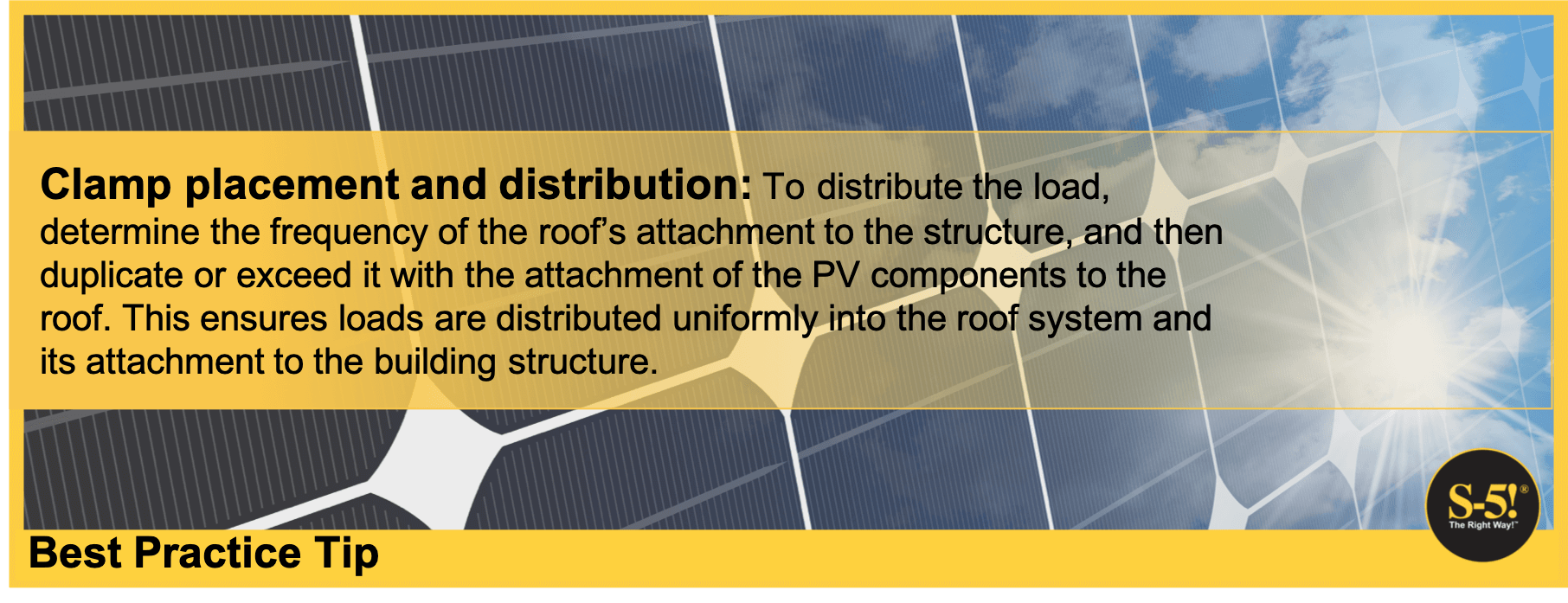
The conservative and recommended way to distribute the load is to determine the frequency of the roof’s attachment to the structure, and then duplicate or exceed it with the attachment of the PV components to the roof. By following this approach, one is assured that loads are distributed uniformly into the roof system and its attachment to the building structure.
Note: Attachment should be less frequent only when a qualified engineer has proven adequacy.
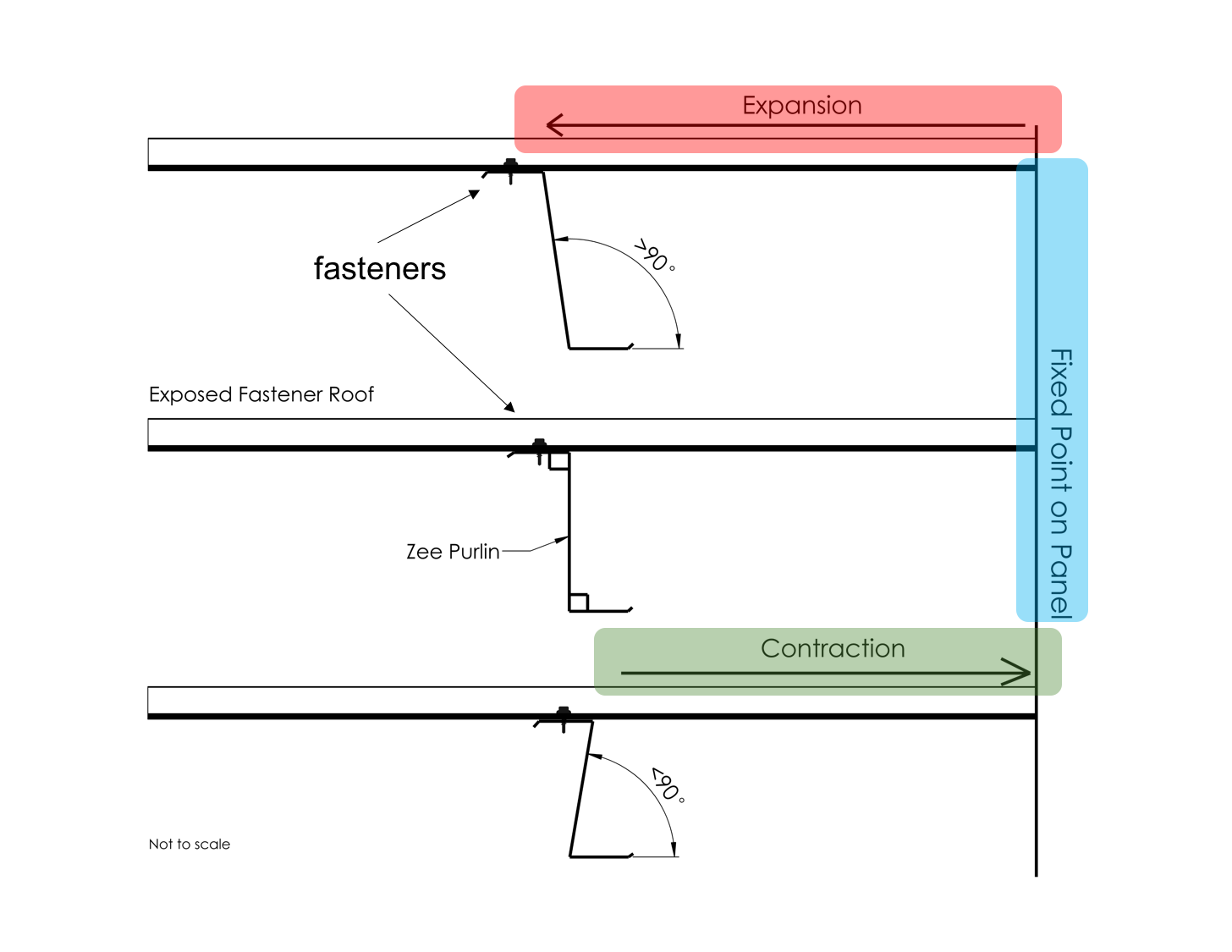
What is Thermal Movement?
Thermal movement also affects clamp placement. SSMR is designed to respond thermally with dimensional change along the length of the panels. This is accomplished at the panel-to-attachment clip interface. Most pre-engineered metal buildings utilize dual component clips for this attachment. The top portion moves thermally with the panel, while the base portion, which is attached to structure, is stationary. When attaching to this type of SSMR, the seam clamp can be attached at a clip location or between clips. Some other SSMR types—normally installed over wood decks—rely on differential movement between roof clips and roof panels to accommodate thermal cycling. When installing a PV system on this type of SSMR, the clamp locations should avoid the panel’s attachment clips.
You can use the above guidelines whether you are using mounting rails or using direct attachment (rail-less systems).
Top Advantages of Direct Mounting
- Better space utilization
- Economic: Total MSRP hardware costs (includes seam clamps, interface hardware) = a $0.12/Wp on small systems and around $0.06/Wp on very large ones. These cost objectives cannot generally be met using rails.

Rail-Less Solar PV System Costs Less
...to our blog to receive updates when we post new content, release new products, and more!

